Sheryl Sims’ family tree is woven into her quilts, a marriage of her passion for tracing her ancestral lineage and her desire to preserve the stories of her relatives for future generations.
Every new leaf Sheryl unearths is a journey through time and documents her and her family’s stories in vibrant art quilts, using fabric as her paint and canvas. As her research led to surprising branches of her lineage, some of which predate the founding of the United States, she has confronted the painful pasts of enslaved ancestors, giving new meaning to the lives they lived through her creations.
The child of an Army officer, Sheryl was born in Germany, moved all over the US, and also lived in Thailand, relocating as her father Emmett’s military career advanced. Sheryl settled in Northern Virginia, where she had lived a couple of times when her father’s tours took him to the Pentagon, after graduating from the University of Houston with a degree in environmental design. One of five children, she didn’t know much about her family’s history beyond her great-grandparents. Slavery, she said, “interrupted everything.”
“I remember, back in high school, just wondering about our family’s roots,” Sheryl said. “I think, being African American, it’s always been a struggle for us as a people to know where we came from and to validate it, to prove this is your ancestry; these are your people.”
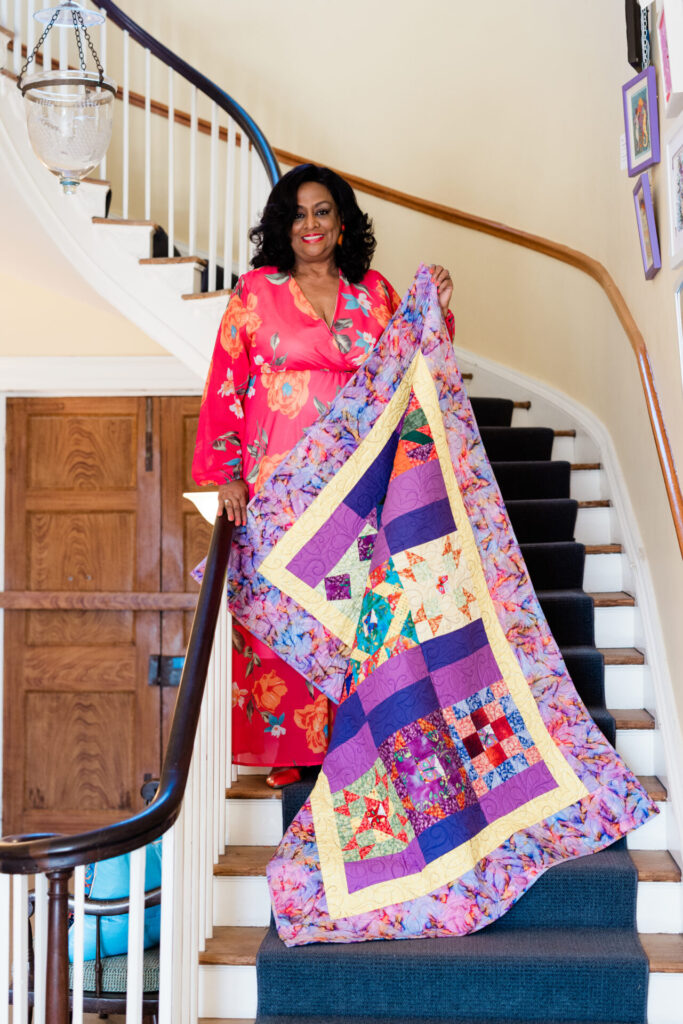
Sheryl’s story as an art quilter began when the Arlington chapter of Quilter’s Unlimited, of which she is a member, visited a local quilt shop, Artistic Artifacts, in the Northern Virginia suburbs for a presentation by California-based mixed media artist Libby Williamson. Sheryl’s mother, Johnnye, taught her to sew in high school, and she took up quilting around 2010 but was on the verge of quitting, feeling like she just wasn’t skilled enough to match perfect points or craft carefully measured squares. “I thought everything had to be so perfect and precise, and that’s not my style,” she said.
Sheryl found her style in the freestyle raw-edge appliqué and mixed media quilts she saw at the presentation. As she established her artistic voice as a quilter, she applied that to her genealogical research, as she searched for a patriot to list in her application to join the Daughters of the American Revolution, a service organization for women who can trace their lineage to a patriot who helped achieve American independence.
Sheryl’s quilts explore her heritage and the moments, ideas, and places in American history that tether her to the world, as well as her faith—an important aspect of her life, especially growing up, when she and her family members were often the only African American faces in each new community they settled into.
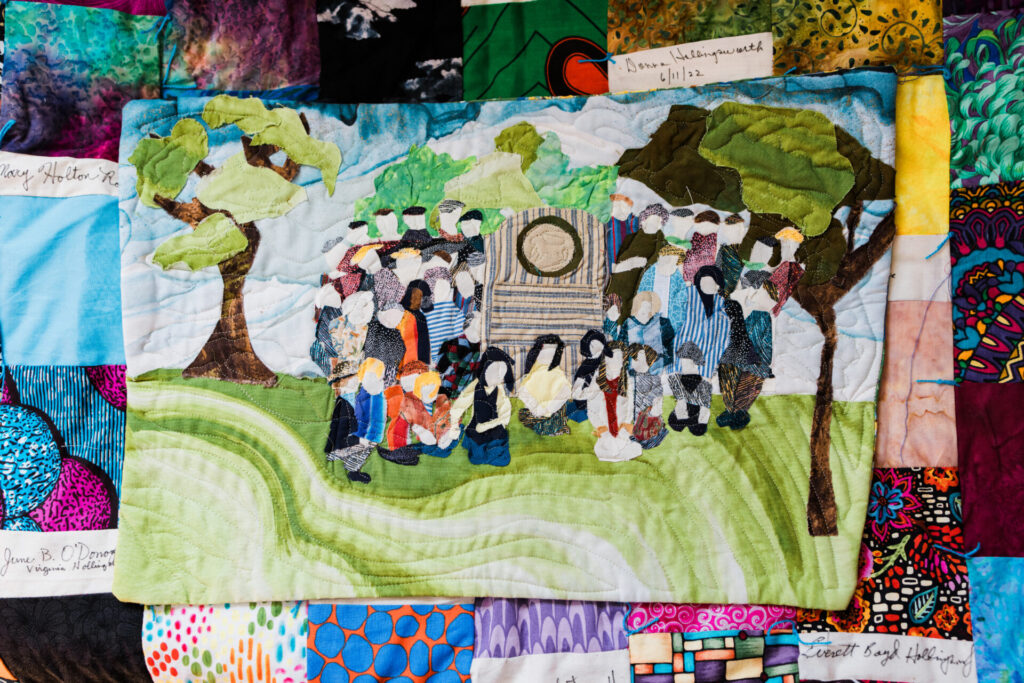
“I was just fueled by my ancestry search. It gave me something to focus on, in terms of a theme of what I wanted to quilt,” Sheryl said. “I didn’t want to do a bunch of little girls in a bonnet. I wanted to depict my history because I wanted my daughter to know our family history.”
Sheryl is also inspired by the work and traditions of the Gees Bend quiltmakers, African American women from rural Alabama whose improvised quilts were born of necessity, using the scraps and tools on hand to bring warmth to their families. “They were quilting with scraps,” Sheryl said.
Sheryl’s quilts are assembled in similar style, and she works fast, completing a quilt in a day. They’re like folk art in their simplicity and evoke emotion in the snapshots they share. Two of her favorite quilts are of her daughter, Amber Wihshi (now 29) being held by each of her parents as a baby. Amber, an only child, was born when Sheryl was 39, a year before her mother died of cancer in 1997. In each portrait, Sheryl captures the bond between grandparent and child, the enduring love gleaming in their bright smiles.
“It really hit me that it is important that we keep people’s memories alive through our stories and through remembering them,” Sheryl said.
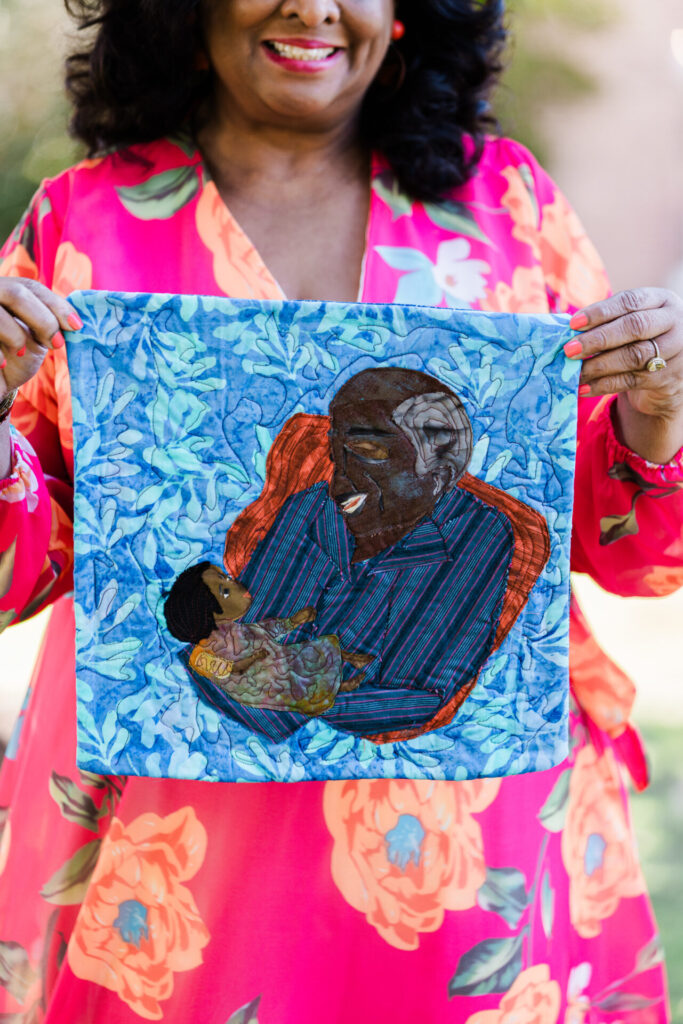
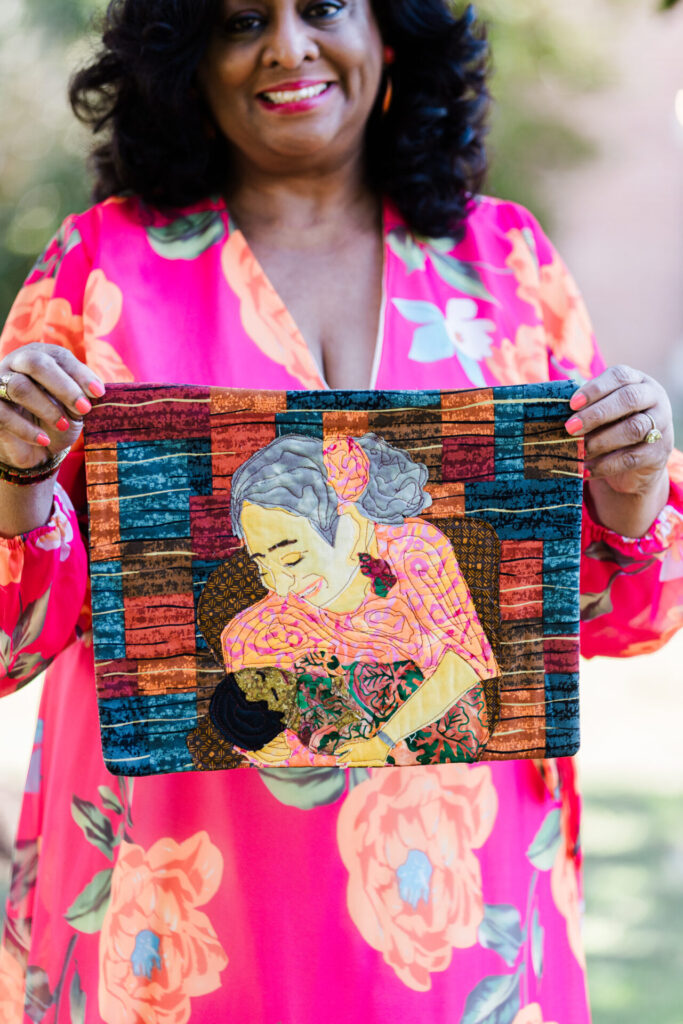
These quilts from 2021 quilts depict Sheryl’s daughter sharing special moments with her grandparents. On the left is Sheryl’s dad and on the right is her mom.
That also includes memorializing those she’s never met but who inform her life, like Mariah, her fourth great-grandmother, who was enslaved and had two children with her enslaver, a white planter from whom Sheryl also descends. Sheryl found Mariah in her genealogical search, and in 2017, she visited the home in Louisiana where she was held in bondage. Sheryl’s quilt is an imagined image of a story she learned about the enslaved women who worked at the home, including Mariah, preparing the property for their mistress’ comfort after they all moved there from North Carolina. The home has since been renovated, but Sheryl keeps a slave-made brick from the original property.
“I really do feel like, without her resilience and strength, I wouldn’t really be here,” Sheryl said of Mariah.
In another quilt—a favorite—Sheryl depicts her great-great grandmother, Chaney Tillman, who was born enslaved and eventually freed. An elderly cousin who met Chaney when he was a child shared stories of Chaney’s life with Sheryl. Rather than depict her traumatic childhood, Sheryl shows the woman doing something she loved: she’s tending to her appliqué garden of bright yellow, green, and orange flowers over a lush landscape. “I made this quilt out of the stories that he told me,” Sheryl said. “I imagined them.”
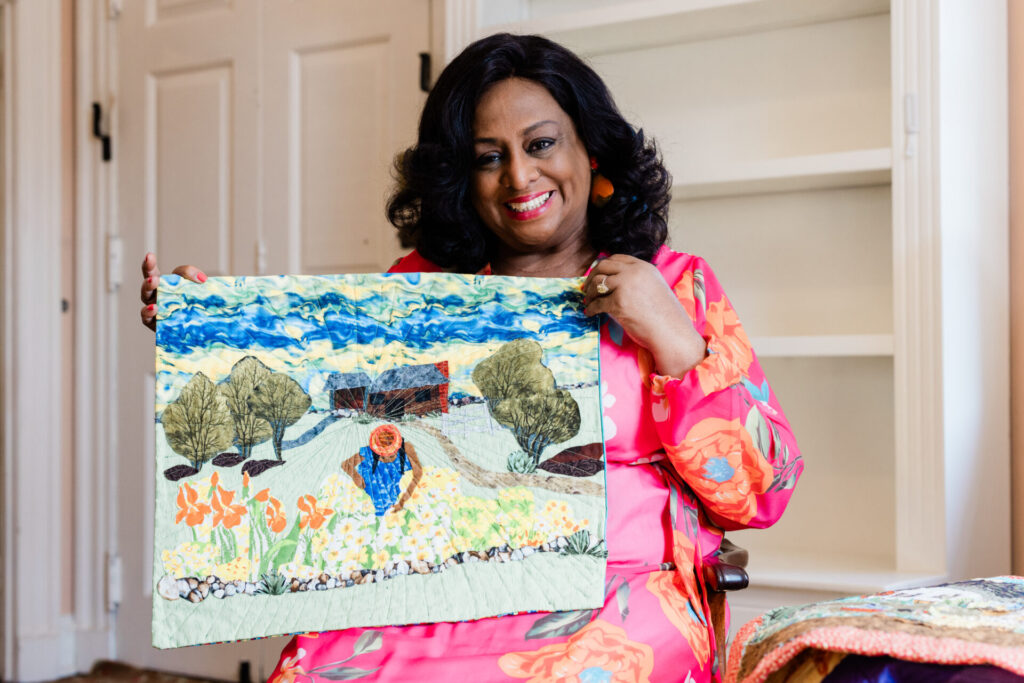
While Sheryl’s quilts range from family to stories rooted in religion and the Bible, she has also documented more current events. During the COVID-19 pandemic, she was making a quilt a day and even quilted a self-portrait of herself quilting. In another favorite quilt, she memorialized a visit to the US Supreme Court after Justice Ruth Bader Ginsburg died, quilting mourners of all races with their arms uplifted in praise of the judge who advocated for social justice under the word “Hope.”
That quilt, as well as the ones of Chaney Tillman and others, were among the 70 shown in an exhibit of Sheryl’s creations at Woodlawn, a National Trust for Historic Preservation Site, located just a short drive from her home in Alexandria, from October through December 2023.
Originally part of George Washington’s Mount Vernon, Woodlawn was sold by Washington’s descendants in 1846 to Quaker families, who established the property as a free labor colony and sold lots to free African American and immigrant farmers.
Sheryl’s work to trace her lineage connected her to early Quaker settlers, including those who helped establish Woodlawn as an antislavery colony. Woodlawn and Sheryl’s Quaker ties are featured among her many quilts.
“She has depicted so many aspects of her heritage in her quilts,” Martha Claire Catlin, an author and historian at the Alexandria Friends Meeting at Woodlawn, said. Martha helped Sheryl with her research, and naturally, she made a quilt honoring that work, too. “It was just an honor for us to be among those that she was paying tribute to in these beautiful quilts.”
Sheryl continues to quilt her story, infusing her deep faith and love of family and history into each. “With my quilts, anybody looking at them can pretty much tell what I’m into,” Sheryl said.
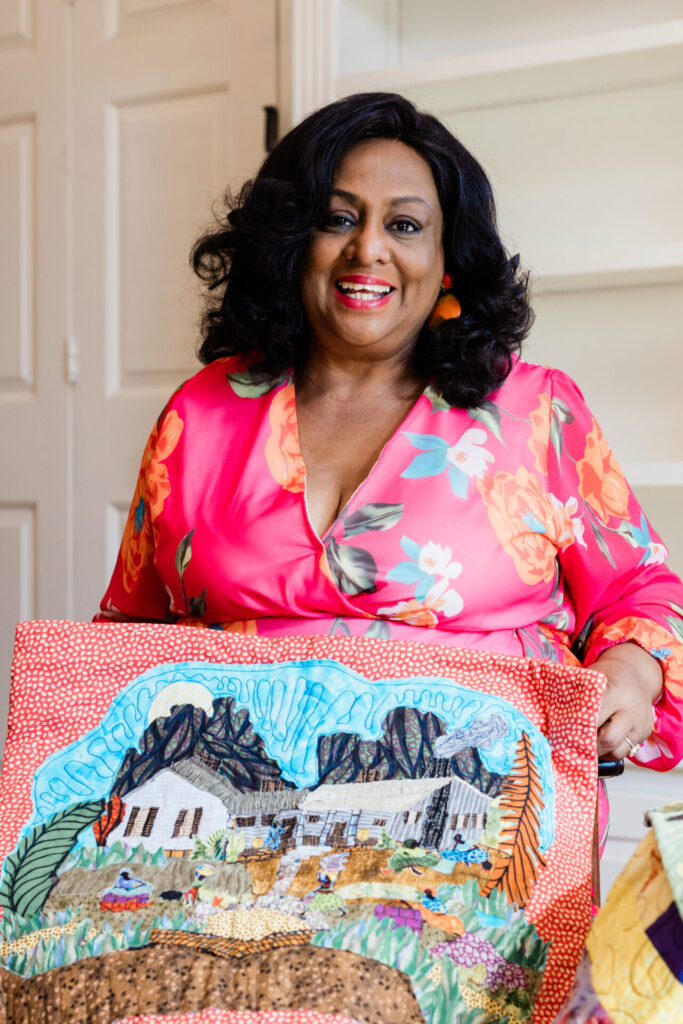
Courtney Mabeus-Brown has been a journalist for more than two decades and a quilter for about two years. She bought her first sewing machine during the COVID-19 pandemic, making bags and small home accessories before a friend got her hooked on quilting; she’s now made three quilts, and there is no end in sight. Courtney lives in Northern Virginia with her husband and cat in an old 1880s home. Her award-winning journalism has appeared in The New York Times, The Washington Post, The Virginian-Pilot, and many others, and her sewing work can be found on Instagram at @SundrySouthKing.
Sign up for our newsletter to receive exclusive offers, news, and more!